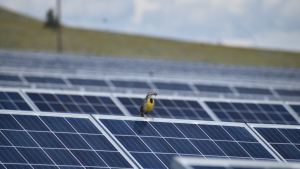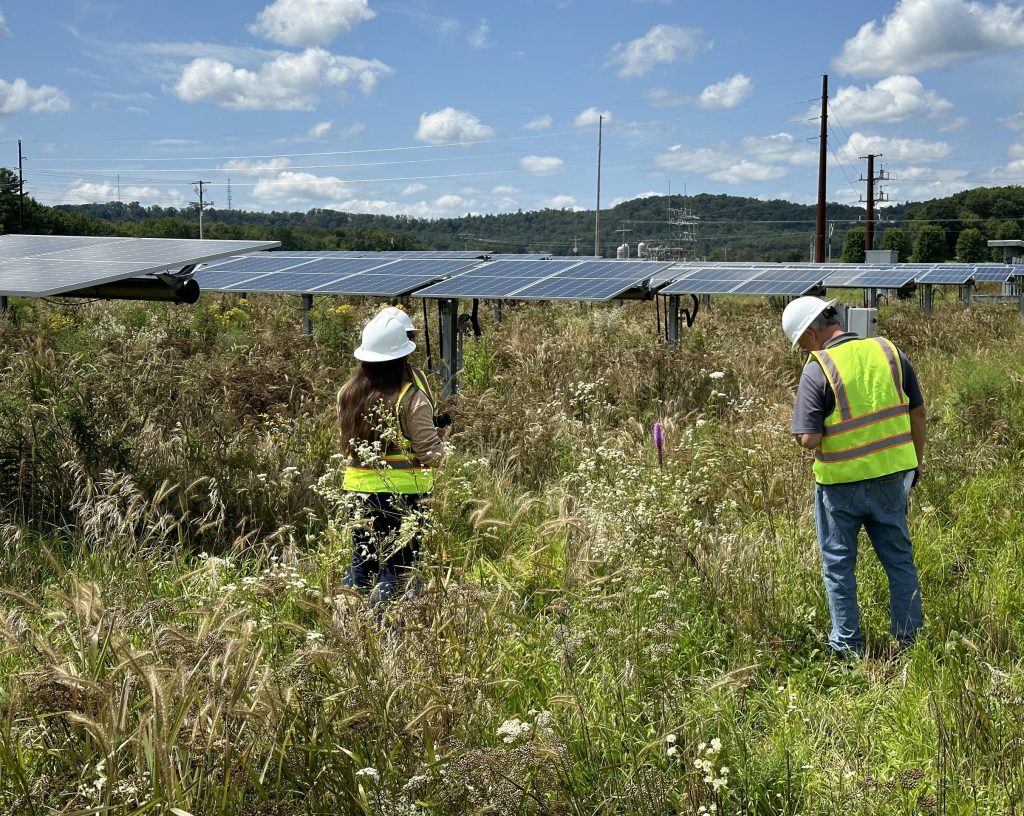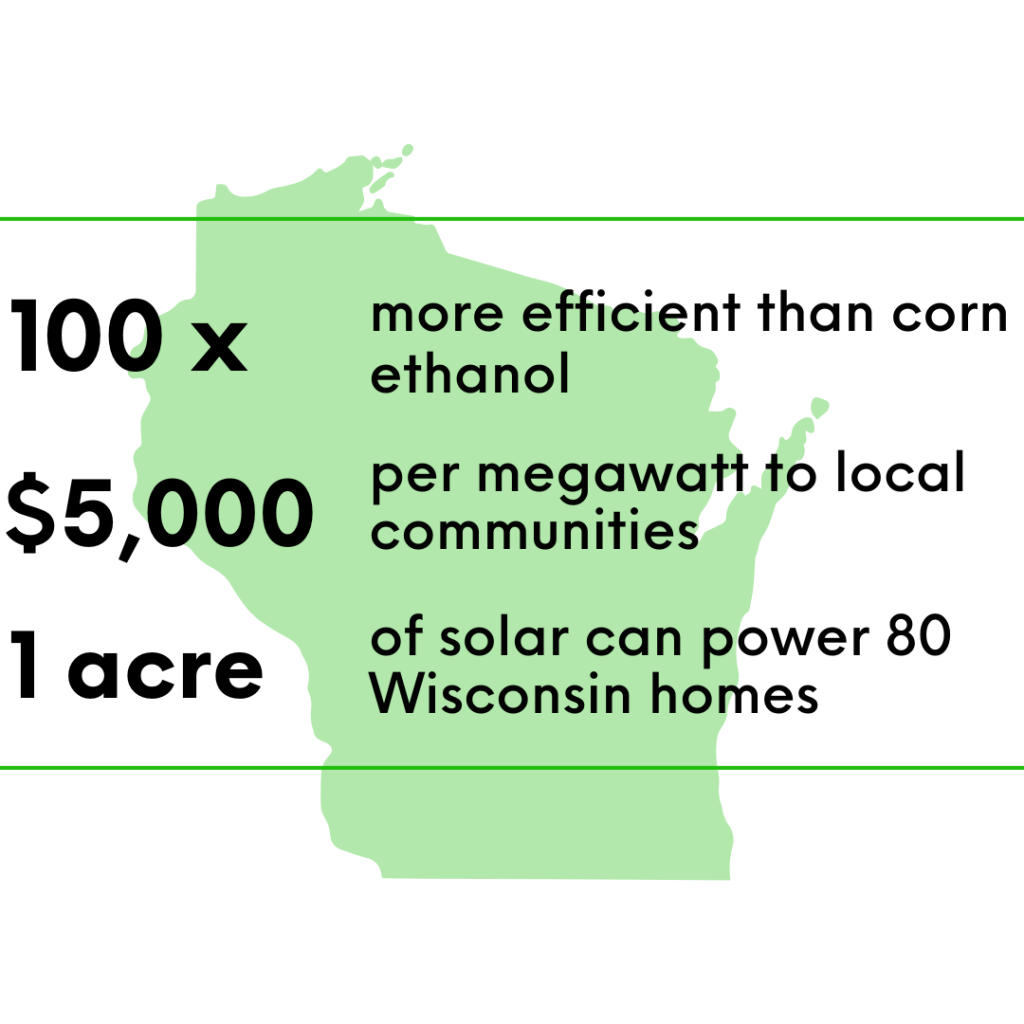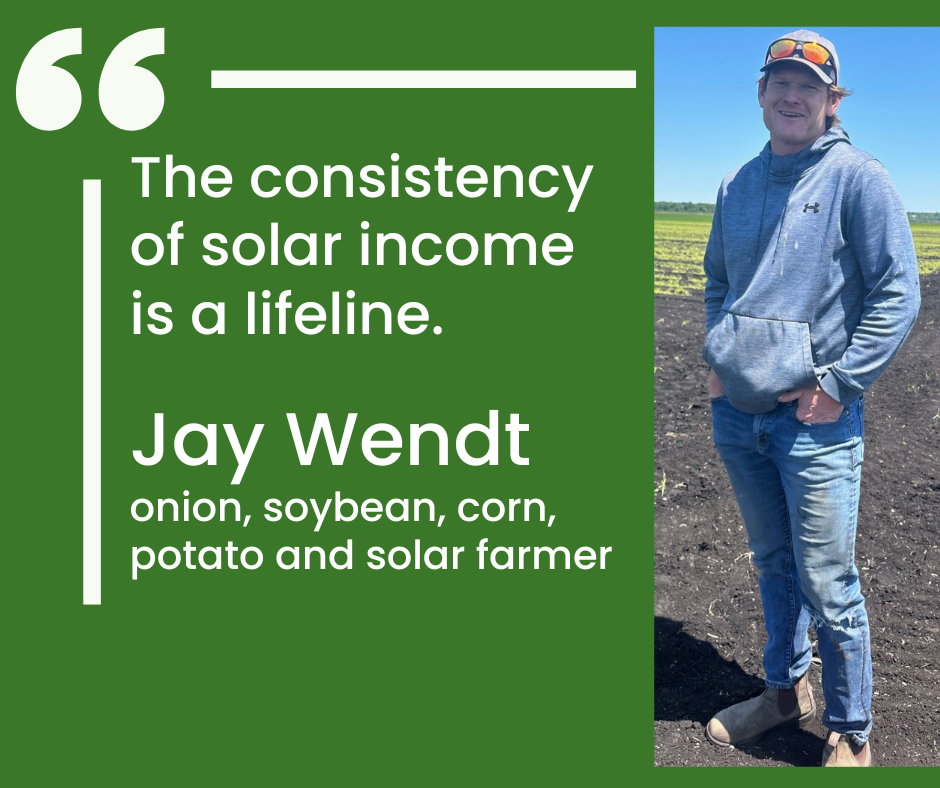Wisconsin-grown clean energy
Solar farms are a critical step on the path to American energy independence, providing a clean, efficient way to power Wisconsin homes and businesses. When paired with battery storage, solar can bring reliable, Wisconsin-grown energy to our communities 24 hours-a day.
Featured Solar Project Proposal in Wisconsin
Whitewater Solar
Whitewater Solar will bring clean energy and local economic benefits to Jefferson and Walworth Counties by:
- Generating $900,000 annually for local communities hosting the project.
- Creating hundreds of jobs during construction and about 2-4 permanent jobs.
- Producing enough clean energy to power 21,500 homes.

Facts About Solar
Solar energy isn’t just about fighting climate change. It’s about preserving Wisconsin’s family farms, strengthening local communities, protecting our lakes and streams, and restoring vital habitat.
Funds for Local Communities
Under state law, local governments hosting a utility-owned solar project or a developer-owned solar project over 50 megawatts (MW) receive $5,000 per megawatt every year from the state’s utility aid fund. Large solar farms can generate millions of dollars a year to help host communities meet urgent needs like investing in municipal buildings, repairing roads, and buying emergency response equipment.
Peace of Mind for Family Farms
Solar farms provide a reliable, drought-resistant revenue stream for our family farms. This steady income means Wisconsin farmers are less vulnerable to fluctuations in market prices, uncertain trade regimes, and changing weather patterns, helping family farm stay on the land.
Improving the Surrounding Environment
Integrating solar into conventional farmland can restore soil health, provide habitat for native pollinators and improve water quality by reducing sediment and fertilizer runoff into nearby waterways.
According to Clean Wisconsin’s Solar Farm Impact Analysis:
- Solar farms that replace conventional row crops like corn and soybeans reduce sediment and phosphorus pollution runoff into nearby lakes, rivers and streams by 75-95%.
- When deep-rooted, perennial vegetation is planted among the panels, solar farms increase soil carbon sequestration by 65%, and improve overall soil health.
- Planting perennial vegetation among the panels also improves wildlife habitat compared to existing cropland, including a 300% improvement in habitat quality for pollinators, which are in steep decline.
- Solar farms produce 100 times more net energy per acre than corn grown for ethanol and are a far more efficient use of land. To meet net-zero carbon emissions, Wisconsin only needs about 200,000 acres of land for solar, or about 15% of the 1.5 million acres of land currently devoted to ethanol production in our state.
Health Benefits
Every kWh of electricity generated from solar actually saves Wisconsin money because of reduced public health costs. Replacing coal and gas burning power plants with clean solar energy results in public health benefits of 5-10 cents per kWh. This savings exceeds the cost of generating solar electricity (3-4 cents per kWh).
Learn More




